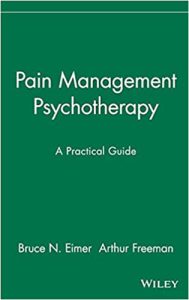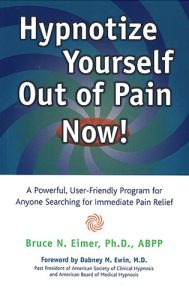It is time to stop struggling with your pain and to start getting relief!
If you suffer from chronic pain, you need to read our important new book.
TAMING PAIN: A mindful approach for bringing pain relief.
Mindful Pain Control is a gentle and compassionate way to bring pain relief.

- If you are dissatisfied with how the medical system treats you, you need to read this book.
- If you are fed up with the attitudes of many doctors, you need to read this book.
- If you are tired hearing “you need to learn to live with the pain”, you need to read this book.
- If you are tired hearing “your mood and attitude create your pain”, you need this book.
- If you are tired hearing “you’re in pain because you’re depressed”, you must read this book.
- If you are tired hearing that “the pain is mostly in your head”, you need to read this book.
- If you are tired being treated as an addict for requesting pain medicine, you need this book.
- If you are tired of fighting pain, you need to read this book.
- If you are tired of trying and trying to get enough pain relief, you need to read this book.
It is time to stop fighting pain. There is another way.
Don’t Fight It, Tame It!
“All pain is real. Pain can never be “all in your head” unless you don’t have a body! Pain sensations are felt physically in your body but they are perceived by your brain.
Read our book and let us teach you how to communicate with your body to address your body’s gripes and pains in ways that are calming, comforting, and healing.
Check out what’s in our book right here:
I am Dr. Bruce Eimer. I am a licensed and board-certified clinical psychologist in South Florida, and I specialize in pain management. I have been in practice since 1986 and I have treated thousands of patients with chronic pain.
- Patients who were disillusioned with their doctors.
- Patients who had too many unnecessary surgeries.
- Patients whose pain had been mismanaged by physicians who prescribed too many medications.
- Patients who could not tolerate the side effects of the medications they were taking.
- Patients who were put on high doses of opioids by their doctors and who became drug addicts.
- Patients who turned to street drugs to get pain relief.
- Patients who drank too much and smoked too much.
- Patients who had lost hope of ever getting better.
- Patients who believed they would never be able to do the things they used to do.
- Patients who were mislabeled as “difficult”.
- Patient’s who became severely depressed because of their persistent pain.
- Patients who relied on anxiety medications so they could get to sleep.
- Patients who relied on opioid medications to get through the day.
- Patients who were severely deconditioned physically.
- Patients whose relationships suffered as a result of their physical limitations.
- Patients whose relationships suffered as a result of their incessant complaining.
I could go on and on. But hopefully, you get the point.
The medical system failed these people. Big Pharma failed these people.
I have also been managing my own chronic pain since 1994. So, I know what it is like to live with chronic pain not only as a clinical practitioner but also as a patient myself. My search for my own relief after I was severely injured in a car accident in 1993 led me to research a variety of pain treatments.
- I had surgery and it helped one pain problem, but it caused other persistent pain problems.
- I tried different medications, but they caused intolerable side effects.
- I tried nerve blocks, but they only gave me temporary relief.
- I tried physical therapy and the physical therapist made my pain worse!
- I tried yoga but I was too stiff to do it!
- I learned to meditate, but I couldn’t sit still because of the pain.
- I tried psychotherapy but the therapists did not understand chronic pain.
- I tried hypnosis, but it didn’t touch the pain!
- I tried tapping therapies, but they didn’t work.
- I tried EMDR but it just made my pain more intense.
I had to go on disability for a while. I was disillusioned and very unhappy. I dare say I became depressed!
I went to see several psychiatrists for antidepressant medications. Several medications did nothing, and several had intolerable side effects.
I finally realized that no one could help me but me. So, I went to work on figuring out how to help myself using all the tools available to me as a clinical psychologist that made sense.
I read numerous books on pain management, hypnosis, meditation, attitudinal healing, energy healing, cognitive-behavior therapy, Zen, yoga, breathing techniques and psychotherapy.
I kept detailed notes on which interventions worked with which patients whom I treated.

I began to tweak different techniques of hypnosis, meditation, imagery, breathing, psychotherapy, and energy healing.
I was invited to see “difficult” pain patients for a large HMO who were concerned about their over utilization of medical and mental health services. I saw hundreds of pain patients for this HMO and kept detailed records. I wrote reports with recommendations for how to help these people get real and lasting pain relief so that they could become functional again.
My professional and personal experiences with persistent pain led me to write my first book which was a textbook for health professionals about treating pain. It is titled Pain Management Psychotherapy: A Practical Guide. It was published by John Wiley & Sons in 1998. It is still available on Amazon.
Several years later “an angel” told me I needed to write a self-help book about using self-hypnosis for pain relief. There were no published books completely devoted to this topic available at that time.
My self-help book Hypnotize Yourself Out Of Pain Now! was first published in 2001. This book was highly acclaimed by people with chronic pain who bought it. It was endorsed and recommended by many prominent physicians and therapists.

Pain Clinic
In 2011, I was hired by a large hospital system in the Philadelphia area to start a Pain Psychology and Behavioral Medicine Program in a busy hospital pain clinic that had difficulties treating the large number of patients who went there seeking opioids for pain. I worked there through 2018.
Working at this center was a real education. It was where the proverbial “rubber met the road” in serving the needs of complex pain patients with dual diagnoses and often quadruple comorbidities of persistent pain disorders, multiple medical problems, psychiatric and mood disorders, and substance abuse disorders.
Few things that I had done up to that point thoroughly prepared me for this job! But I persevered and I learned a lot along the way working there.
After working in this pain clinic for several years, I decided to write a new self-help book to address the needs of complex chronic pain patients. I wanted to write a book that would be easy to read, interesting, welcoming, and that would address the needs of these patients with all their medical, substance abuse and psychiatric comorbidities.
I wrote draft after draft, but I continued to be dissatisfied with the product. Finally, I dropped the project for several years. Then, in 2018, I had to take a break from the job because my spinal stenosis and degenerative disc disease worsened and I experienced substantial worsening of my back and leg pain-to the point where I became disabled.
I was not a spine surgery candidate. My spinal disease had progressed too far. I did not want to become dependent on opioid pain medications. I had witnessed too many horror stories of opioid dependence and addiction working at the pain clinic.
So, I recognized that I needed to practice on myself what I taught and did with my pain patients. This motivated me to begin working on my book again.
Again, completion of the book was delayed several times as life got in the way. Finally, after moving to South Florida in 2019, I returned to the book. And I brought in my very bright and talented friend, Roy Hunter, with whom I had co-authored a previous book.
We finally completed our joint effort in the Spring of 2020. I must admit that the COVID-19 pandemic gave me the time during my “social isolation” to complete my book. The result was that the book was finally born. It is titled:
Taming Chronic Pain: A mindful approach for bringing pain relief
You can read the Table of Contents, the Foreword, and the Preface right here:

- If you have been fighting with your persistent pain for too long without significant or enough pain relief, it is time you do something different.
- STOP FIGHTING WITH YOURSELF! Learn how to “tame” your pain.
- YOU CAN GET RELIEF WITHOUT FIGHTING THE PAIN!
- This book will teach you Mindful Pain Control.
- Mindful Pain Control is a gentle and compassionate way to bring pain relief.
You can purchase the eBook on my website.
You can purchase the paperback version on Amazon.
Taming Pain Training for People with Chronic Pain
I have developed a two-day “Taming Pain” virtual retreat designed to meet the needs of people with chronic pain.
When you register, you will receive a free copy of Taming Chronic Pain.
This two-day experiential training will bring the book to life. We will cover the concepts and the exercises in the book…And much more.
When, you participate in this workshop…
- You will learn powerful pain management skills
- You will learn the nuts and bolts of mindfulness meditation
- You will learn how to use self-hypnosis to tame your chronic pain
- You will learn the benefits and limitations of acceptance
- You will learn to fine tune your self-observation skills
- You will learn how to target what behaviors you need to adjust
- You will learn how to release your unnecessary emotional burdens
- You will learn how to let go of “old pain”
- You will learn how to create positive expectations and turn them into reality
- AND MUCH MORE . . .

Pain Control Hypnosis Practitioner workshops for health care professionals
This two-day live webinar course is intended for the experienced mental health clinician (psychiatrist, psychologist, clinical social worker, licensed professional counselor, nurse practitioner, pastoral counselor) and health professional (physicians, nurses, dentists) who may or may not be familiar with clinical hypnosis and the applications of this treatment method to chronic pain.
Whether you have experience with hypnosis, or you are looking to add it to your practice, this live course will provide you an overview of using it for chronic pain management.
In this exclusive live online training, you will learn evidence-based strategies and treatment methods that you can use to help patients with persistent physical pain.
Take this course and you will learn how to use mindfulness techniques and hypnosis to create immediate pain relief.
You will complete this intensive training course with the education you need to expand your psychotherapy practice with an important new specialty niche as a Pain Control Hypnosis Practitioner.
You can also learn Pain Control Hypnosis at your own pace and earn up to 16 Continuing Education credits with my pre-recorded Hypnosis for Pain video course
This course will provide you with a thorough introduction so that you can begin to use Hypnosis in your practice for chronic pain management.
The course includes:

- My eBook, Hypnotize Yourself Out of Pain Now (First Edition),
- A set of written course materials,
- Professionally edited videos of me teaching a 2-day Pain Control Hypnosis class,
- A written knowledge test which you must pass to earn CE credits.
This online video training will provide you with . . .
- A set of tools for helping your clients get realistic pain relief
- A proven structured pain intake interview
- A guide for evaluating a client’s suitability for pain control hypnosis
- Instruction for developing client-centered pain control hypnotic strategies
- Principles for formulating individualized hypnotic suggestions to transform the experience of pain
- Instruction on using regression and hypnoanalysis to discover and release emotional factors that block lasting pain relief
- Effective ways to employ hypnosis for reducing pain intensity when appropriate and reducing unnecessary emotional suffering



